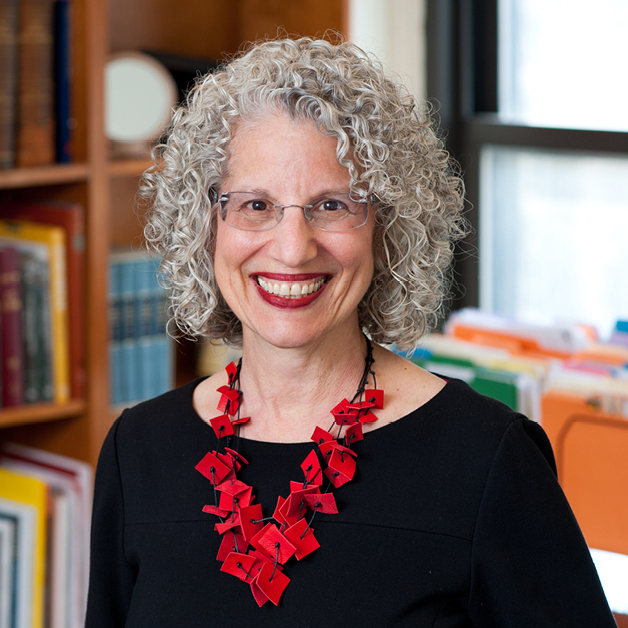A Holiday of Contradictory Emotions

Preparing to celebrate our second Pesah under the grip of a global pandemic, our hearts are filled with both sadness and hope. No one has been untouched by COVID-19. We’re grieving a loved one, friend, or neighbor whose life was cut short. We’re experiencing its social and economic toll—overtaxed first responders, teachers, and food providers; overwhelming social isolation; devastating financial insecurity—all exacerbated by underlying inequities. Thankfully, millions have received the vaccine, though many have yet to receive it, and new variants temper our expectations.
As we approach Pesah 2021, these contradictory emotions leave us teetering on a precipice, not sure whether to grieve or celebrate, fear or hope. Such contradictions are central to our celebration of the holiday itself. On the same seder plate, even in the same bite, we juxtapose the bitter and the sweet, the maror and the haroset.
The four different names of Pesah highlight these complicated feelings. Hag Hapesah and Hag Hamatzot both connect to the Israelites’ life in Egypt. Hag Hapesah reminds us of the miracle of the tenth plague, when God passed over the houses of the Israelites who had marked their doorposts with the blood of the Paschal sacrifice. This name vividly depicts how precariously the Israelites found themselves, poised between destruction and liberation—only a blood smear standing between death and deliverance.
Hag Hamatzot focuses on the matzah, described in the Haggadah as “lehem oni,” the bread of affliction. Matzah captures the burdens of slavery since on the night of their deliverance—but surely every other day before that—Israelites subsisted on matzah, for they were deprived of the time needed to wait for dough to rise. Hag Hapesah and Hag Hamatzot evoke terror and deprivation but within each concept, the final plague and the simple bread that nourished the Israelites, is the promise of liberation.
The other two names of the holiday Hag He’aviv (the Festival of Spring) and Zeman Herutenu (the Time of Our Liberation) leave the bitter, harsh conditions behind, instead focusing on hope and salvation.
As the Midrash emphasizes, the springtime Exodus was a deliberate choice on God’s part.
Rabbi Akiva said: [God] only took [the Israelites] out [of Egypt] in a month fit for going out. Not in Tammuz because of the heat. And not in Tevet because of the cold. Rather, in Nissan for it is fit to go out on the road in it: there’s no heavy heat, nor heavy cold. And if you say Tishrei—behold there are seasons of rain in it. [Numbers Rabbah (3:6)]
A logical choice to be sure; the Israelites would have been hampered by heavy rains, mud, or undue heat had God liberated them in any other season. But the symbolism of springtime is unmistakable. We feel the shackles loosening as we begin to see signs all around us—new buds on the trees, warmer weather, longer days. Renewal and rebirth are in the air. Rav Avraham Yitzhak HaKohen Kook captures this well by noting that “Israel’s exodus from Egypt will forever remain the spring of the entire world” [Meged Yerahim, Nissan 5674 (1914)].
The final name of the holiday, Zeman Herutenu, captures the holiday’s essence—and the founding story of our people, birthed through the experience of liberation from bondage. It is this focus that has provided hope and inspiration not only for Jews but for oppressed peoples everywhere over the centuries.
The contradictions evoked by these four discrete names of Pesah are essential to our understanding of Pesah and of Jewish life. The sweetness of our liberation is tied to the bitterness of our slavery. As we learn in the Talmud, Moshe broke the first set of tablets in fury upon witnessing the Golden Calf that the Israelites had built, but according to the Rabbis the Israelites later carried both the new set of tablets and the broken ones with them in the portable tabernacle (BT Berakhot 8a–b).
So, as we prepare to recite the Pesah story at the seder, let’s hold tight to the dual messages of the holiday. We retell the story not only to viscerally relive the experience of slavery and liberation annually, but also because we are different each year and can thus draw new insight and meaning each and every time. Some years, affliction and despair might feel remote to many reciting the Haggadah. This year—though the impact is uneven—we’ve all been broken. But we’ve also learned so much that can help us heal, improve, and adapt—both personally and as a society.
As the world begins to slowly acclimate to whatever our new normal will be, let’s always carry these hard-learned lessons with us. May it instill in us renewed gratitude for all we have, and may it remind us of how much more needs to be done and the role we might play in bringing us closer to redemption.
The publication and distribution of the JTS Commentary are made possible by a generous grant from Rita Dee (z”l) and Harold Hassenfeld (z”l).



